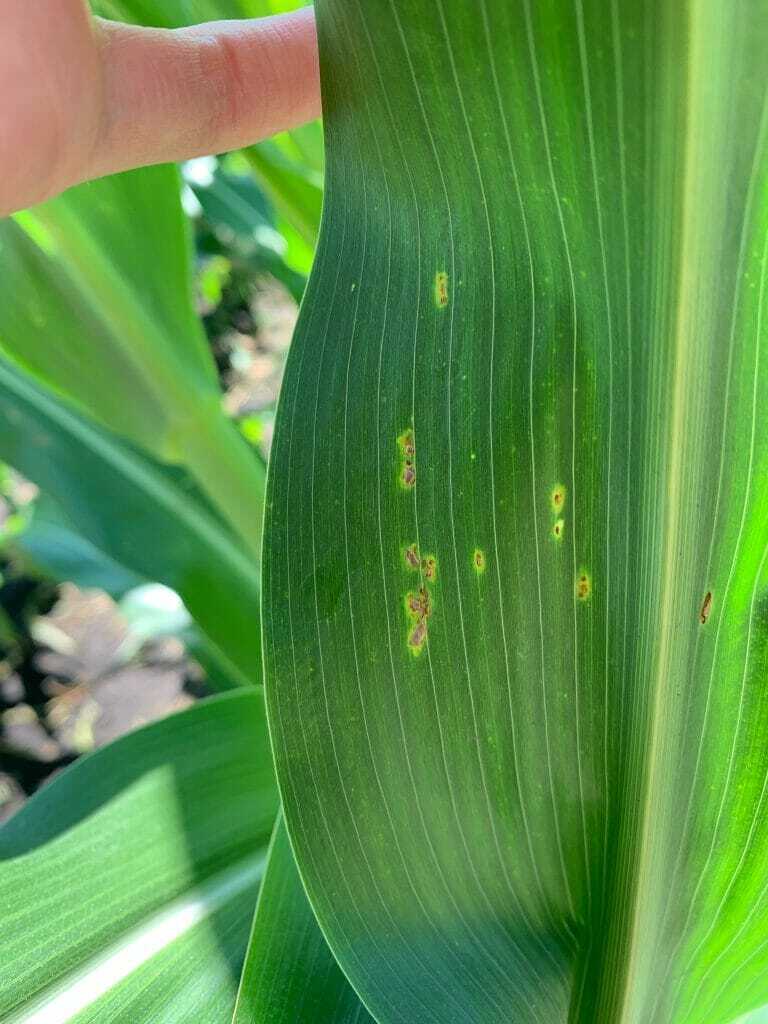With the hot, humid weather that has made its way into Latham Country this summer, conditions are prime for foliar diseases. Fields considered to be high risk are continuous corn fields, fields with conservation tillage and susceptible hybrids. Watch for Gray Leaf Spot, Southern Rust, Common Rust, Northern Leaf Blight, Goss’s Wilt, Tarspot and Eyespot.
When it comes to weighing the costs and benefits of fungicide, there are many factors to consider. Price of corn, product, application and drying cost can all seem like daunting costs that would scare any farmer away from going the extra mile. However, investing in a fungicide could be a small tradeoff when it comes to protecting your yield potential. When scouting, look for disease on the third leaf below the ear. If 50 percent or more of the field is infected at tassel, we recommend spraying fungicide.
The highest return on investment is going to be around VT to R2 time period because you will be able to suppress diseases that may be present on the leaves and protect them for a few weeks of any diseases trying to get into the plant. Corn is also done putting on new leaves at this point. Typically, a 5-8 bu/A yield increase will pay for the investment depending on grain price and application costs. If you are facing heavy disease pressure, be sure to select the right fungicide for the diseases you have. Fungicides with dual modes of action in the Group 3 (Triazoles) and 11 (QoI) will provide suppression and some lasting protection. Look for the active ingredients that end in “ole” (Triozoles) and “in” (QoI).
We recommend doing your homework before applying fungicide. Scout fields to determine disease pressure, consider high susceptibility hybrids and the disease history of the field.

